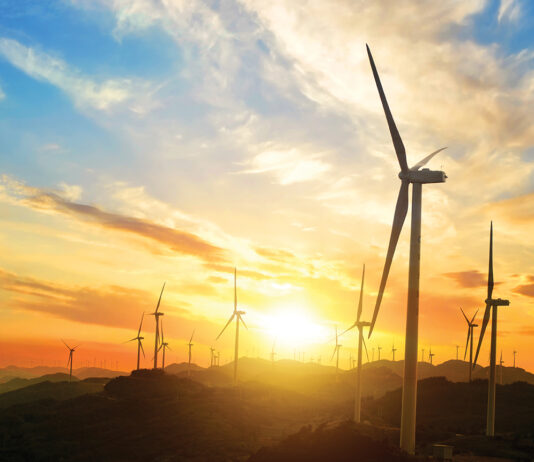
Back in the early 2000s, peak oil supply was a big topic in the news world. That was before the U.S. shale revolution began, and the doomsday warnings abounded. But then the revolution began, turning the United States into the biggest oil producer in the world, and talk of peaking supply quietly disappeared.
Then it was time for peak demand. For years now, various forecasters, most of them from organizations with a vested interest in the energy transition, such as climate-focused Non-Governmental Organizations (NGOs), have been saying that the transition will eliminate oil demand within a few decades.
These organizations said that wind and solar power, and the electrification of transport, would be the drivers of peak oil demand. This year they have seen additional momentum from Russia’s invasion of Ukraine and the resulting oil and gas squeeze in Europe.
Now, the oil shortage is viewed as a catalyst for the transition to low-carbon energy and, as a result, peaking oil demand. The head of the International Energy Agency, Fatin Birol, said as much in a recent interview with the FT.
“After rapid growth in gas consumption in the last 10 years, we think the golden age of gas is coming to an end. Together with the decline in coal and oil that we were already expecting, we now see a peak around 2030 for all fossil fuels.”
What is OPEC’s Response?
At the same time, however, OPEC, which has a vested interest in the longevity of oil demand, has unsurprisingly forecasted this demand will be around for longer than the IEA and its fellow transition champions, such as the European Union, expect or hope. And it will be growing for at least another ten years.
Then again, according to the energy minister of one of OPEC’s members, the UAE, the long-term outlook for the oil industry is one showing a decline. Speaking at the ADIPEC conference in Abu Dhabi in November 2022, Suhail al-Mazrouei said, as quoted by Bloomberg, “To assume oil is going to be there forever is wishful thinking. No matter how much we defend it, it’s in decline mode.”
Mixed Signals from the Industry Leaders
In other words, right now we have two competing narratives about the future of oil. One sees the danger in peaking supply and the other sees the danger in peaking demand. Neither of these narratives is helping enhance the world’s energy security, however, and this could become a bigger problem than either of the peaks being forecast.
There is already a shortage of investment in new oil exploration, and, respectively, production. OPEC has been sounding the alarm on this shortage for months now.
Saudi Energy Minister, Abdulaziz bin Salman, warned in December 2021 that insufficient investment in new oil production threatens a long-term shortage. None other than the IEA called in its Oil Market Report from October of the same year of an imminent shortage and price rally unless more is invested in new oil production.
This is giving the oil industry rather mixed signals. Especially coupled with the unrelenting pressure on Big Oil majors from shareholders, governments, and climate organizations to pivot further away from their core business and focus on low-carbon energy—a call Big Oil is heeding.
Oil’s Impact on Foreign Affairs
Add to all these Western sanctions on Russian oil, which could see the country’s production drop by more than 1 million barrels daily next year, and a supply squeeze begins to seem unavoidable. Some, such as the IEA’s Birol and various E.U. officials still believe this squeeze would only accelerate the energy transition.
One would think they’d know better after the last few months in Europe, but this does not seem to be the case. The belief stems from an assumption that all raw materials for this accelerated transition will be readily available and affordable in sufficient volumes. However, this is not the case. Presently, there’s a massive copper shortage on the way, and wind and solar costs are going up rather than down.
What this means is that we might find ourselves stuck in a situation where there is not enough oil or gas to avoid a prolonged recession. This, compared to what is currently happening in Europe, would look like a picnic.
The Relationship Between Oil and Renewables
At the same time, there will not be enough copper, cobalt, and lithium to replace those missing hydrocarbons with low-carbon electricity. Instead of energy progress, we might witness energy regress back to wood and coal. In fact, we are already seeing this in parts of Europe. This regression would be accompanied by higher carbon emissions, as well.
Years ago, one of the main arguments favoring the energy transition was the finite nature of oil and gas. However, some researchers have counter-argued that oil and gas is not limited. Others have pointed to technological advancements in the extraction of fossil fuels as a reason to believe we will have oil and gas for decades, if not centuries, to come, as long as the price makes these resources economical.
A supply squeeze in the absence of competitive wind, solar, and hydrogen, will change the economics of such fossil fuel resources. Peak oil demand might be delayed once again, as it has been repeatedly in the past.
Long Story Short
Therefore, reports of oil’s imminent death have been greatly exaggerated. At the same time, reports of an imminent supply shortage may be pretty accurate, with prices increasing considerably in the absence of large-scale investment.
Since there is no indication of large-scale investments on the horizon, the world would need to brace for those higher prices. They, in turn, would eventually motivate higher spending on new production. However, with the incoming energy transition, we can expect limited spending.

Irina Slav has been writing about energy, with a focus on the oil and gas industry, since 2006. Her articles have appeared in Oilprice, Fortune, Insider, and Time magazine, among others.
















